Efficacy of a Graphene Oxide/Chitosan Sponge for Removal of Radioactive Iodine-131 from Aqueous Solutions
Abstract
:1. Introduction
2. Materials and Methods
2.1. Materials
2.2. Synthesis of Graphene Oxide Suspension
2.3. Preparation of GO/CS Sponges
2.4. Characterization of GO/CS Sponges
2.5. Adsorption Experiments
3. Results and Discussion
3.1. Characterization of GO/CS Sponges
3.2. Adsorption Capacity
4. Conclusions
Author Contributions
Funding
Institutional Review Board Statement
Informed Consent Statement
Data Availability Statement
Acknowledgments
Conflicts of Interest
References
- Yamashita, S.; Suzuki, S. Risk of thyroid cancer after the Fukushima nuclear power plant accident. Respir. Investig. 2013, 51, 128–133. [Google Scholar] [CrossRef] [Green Version]
- Tronko, M.D.; Howe, G.R.; Bogdanova, T.I.; Bouville, A.C.; Epstein, O.V.; Brill, A.B.; Likhtarev, I.A.; Fink, D.J.; Markov, V.V.; Greenebaum, E.; et al. A cohort study of thyroid cancer and other thyroid diseases after the chornobyl accident: Thyroid cancer in Ukraine detected during first screening. J. Natl. Cancer Inst. 2006, 98, 897–903. [Google Scholar] [CrossRef]
- Zupunski, L.; Ostroumova, E.; Drozdovitch, V.; Veyalkin, I.; Ivanov, V.; Yamashita, S.; Cardis, E.; Kesminiene, A. Thyroid cancer after exposure to radioiodine in childhood and adolescence: 131I-related risk and the role of Selected host and environmental factors. Cancers 2019, 11, 1481. [Google Scholar] [CrossRef] [Green Version]
- Sondorp, L.H.J.; Ogundipe, V.M.L.; Groen, A.H.; Kelder, W.; Kemper, A.; Links, T.P.; Coppes, R.P.; Kruijff, S. Patient-derived papillary thyroid cancer organoids for radioactive iodine refractory screening. Cancers 2020, 12, 3212. [Google Scholar] [CrossRef] [PubMed]
- Haghighatafshar, M.; Banani, A.; Zeinali-Rafsanjani, B.; Etemadi, Z.; Ghaedian, T. Impact of the amount of liquid intake on the dose rate of patients treated with radioiodine. Indian J. Nucl. Med. 2018, 33, 10–13. [Google Scholar] [PubMed]
- Esparza, D.; Valiente, M.; Borràs, A.; Villar, M.; Leal, L.O.; Vega, F.; Cerdà, V.; Ferrer, L. Fast-response flow-based method for evaluating 131I from biological and hospital waste samples exploiting liquid scintillation detection. Talanta 2020, 206, 120224. [Google Scholar] [CrossRef]
- Rose, P.S.; Swanson, R.L. Iodine-131 in sewage sludge from a small water pollution control plant serving a thyroid cancer treatment facility. Health Phys. 2013, 105, 115–120. [Google Scholar] [CrossRef] [PubMed]
- Lee, U.; Kim, M.J.; Kim, H.R. Radioactive iodine analysis in environmental samples around nuclear facilities and sewage treatment plants. Nucl. Eng. Technol. 2018, 50, 1355–1363. [Google Scholar] [CrossRef]
- Mosos, F.; Velásquez, A.M.; Mora, E.T.; Tello, C.D. Determination of 131I activity concentration and rate in main inflows and outflows of Salitre wastewater treatment plant (WWTP), Bogota. J. Environ. Radioact. 2020, 225, 106425. [Google Scholar] [CrossRef]
- U.S. Environmental Protection Agency (EPA). National Primary Drinking Water Standards, December 1999; EPA: Washington, DC, USA, 2002. Available online: https://nepis.epa.gov/Exe/ZyPURL.cgi?Dockey=200024LJ.txt (accessed on 10 March 2021).
- World Health Organization (WHO). Guidelines for Drinking-Water Quality: Fourth Edition Incorporating the First Addendum; WHO: Geneva, Switzerland, 2017; pp. 210–211. [Google Scholar]
- Chen, J.; Yao, B.; Li, C.; Shi, G. An improved hummers method for eco-friendly synthesis of graphene oxide. Carbon 2013, 64, 225–229. [Google Scholar] [CrossRef]
- Yadav, M.; Rhee, K.Y.; Park, S.J.; Hui, D. Mechanical properties of Fe3O4/GO/chitosan composites. Compos. B. Eng. 2014, 66, 89–96. [Google Scholar] [CrossRef]
- Kazantseva, N.N.; Ernepesova, A.; Khodjamamedov, A.; Geldyev, O.A.; Krumgalz, B.S. Spectrophotometric analysis of iodide oxidation by chlorine in highly mineralized solutions. Anal. Chim. Acta. 2002, 456, 105–119. [Google Scholar] [CrossRef]
- Vijayakumar, G.; Tamilarasan, R.; Dharmendirakumar, M. Adsorption, kinetic, equilibrium and thermodynamic studies on the removal of basic dye rhodamine-B from aqueous solution by the use of natural adsorbent perlite. J. Mater. Environ. Sci. 2012, 3, 157–170. [Google Scholar] [CrossRef]
- Martín, F.S.; Kracht, W.; Vargas, T. Attachment of Acidithiobacillus ferrooxidans to pyrite in fresh and saline water and fitting to Langmuir and Freundlich isotherms. Biotechnol. Lett. 2020, 42, 957–964. [Google Scholar] [CrossRef]
- Boparai, H.K.; Joseph, M.; O’Carroll, D.M. Kinetics and thermodynamics of cadmium ion removal by adsorption onto nano zerovalent iron particles. J. Hazard. Mater. 2011, 186, 458–465. [Google Scholar] [CrossRef]
- He, L.C.; Diao, L.J.; Sun, B.H.; Zhua, L.H.; Zhao, J.W.; Wang, M.; Wang, K. Summing coincidence correction for γ-ray measurements using the HPGe detector with a low background shielding system. Nucl. Instrum. Methods Phys. Res. A 2018, 880, 22–27. [Google Scholar] [CrossRef]
- Zhang, L.; Wang, Y.; Yang, X. Structure and properties of graphene oxide-chitosan composite membrane prepared by the plasma acid solvent. J. Fiber Sci. Technol. 2018, 74, 143–149. [Google Scholar] [CrossRef] [Green Version]
- Gong, Y.; Yu, Y.; Kang, H.; Chen, X.; Liu, H.; Zhang, Y.; Sun, Y.; Song, H. Synthesis and characterization of graphene oxide/chitosan composite aerogels with high mechanical performance. Polymers 2019, 11, 777. [Google Scholar] [CrossRef] [Green Version]
- Kim, S.G.; Park, O.K.; Lee, J.H.; Ku, B.C. Layer-by-layer assembled graphene oxide films and barrier properties of thermally reduced graphene oxide membranes. Carbon Lett. 2013, 14, 247–250. [Google Scholar] [CrossRef] [Green Version]
- Yadav, M.; Ahmad, S. Montmorillonite/graphene oxide/chitosan composite: Synthesis, characterization and properties. Int. J. Biol. Macromol. 2015, 79, 923–933. [Google Scholar] [CrossRef]
- Liu, S.; Ouyang, J.; Luo, J.; Sun, L.; Huang, G.; Ma, J. Removal of uranium (VI) from aqueous solution using graphene oxide functionalized with diethylenetriaminepentaacetic phenylenediamine. J. Nucl. Sci. Technol. 2018, 55, 781–791. [Google Scholar] [CrossRef]
- Emadi, F.; Amini, A.; Gholami, A.; Ghasemi, Y. Functionalized graphene oxide with chitosan for protein nanocarriers to protect against enzymatic cleavage and retain collagenase activity. Sci. Rep. 2017, 7, 42258. [Google Scholar] [CrossRef] [Green Version]
- Inglezakis, V.J.; Satayeva, A.; Yagofarova, A.; Tauanov, Z.; Meiramkulova, K.; Farrando-Pérez, J.; Bear, J.C. Surface interactions and mechanisms study on the removal of iodide from water by use of natural zeolite-based silver nanocomposites. Nanomaterials 2020, 10, 1156. [Google Scholar] [CrossRef]
- Besemer, M.; Bloemenkamp, R.; Ariese, F.; Manen, H.J. Identification of multiple water–iodide species in concentrated NaI solutions based on the Raman bending vibration of water. J. Phys. Chem. A 2016, 120, 709–714. [Google Scholar] [CrossRef] [PubMed]
- Kamal, M.A.; Bibi, S.; Bokhari, S.W.; Siddique, A.H.; Yasin, T. Synthesis and adsorptive characteristics of novel chitosan/graphene oxide nanocomposite for dye uptake. React. Funct. Polym. 2017, 110, 21–29. [Google Scholar] [CrossRef]
- Guerrero-Fajardo, C.A.; Giraldo, L.; Moreno-Pirajan, J.C. Preparation and characterization of graphene oxide for Pb(II) and Zn(II) ions adsorption from aqueous solution: Experimental, thermodynamic and kinetic study. Nanomaterials 2020, 10, 1022. [Google Scholar] [CrossRef] [PubMed]
- Ali, I.H.; Al Mesfer, M.K.; Khan, M.I.; Danish, M.; Alghamdi, M.M. Exploring adsorption process of lead (II) and chromium (VI) ions from aqueous solutions on acid activated carbon prepared from Juniperus procera leaves. Processes 2019, 7, 217. [Google Scholar] [CrossRef] [Green Version]
- Ayawei, N.; Angaye, S.S.; Wankasi, D.; Dikio, E.D. Synthesis, characterization and application of Mg/Al layered double hydroxide for the degradation of congo red in aqueous solution. Open J. Phys. Chem. 2015, 5, 56–70. [Google Scholar] [CrossRef] [Green Version]
- Oluwafemi, O.; Ojo, A.A.; Ezekiel, A.; Adebayo, O.L. Adsorptive removal of anionic dye from aqueous solutions by mixture of kaolin and bentonite clay: Characteristics, isotherm, kinetic and thermodynamic studies. Iran. J. Energy Environ. 2015, 6, 147–153. [Google Scholar] [CrossRef]
- El-gammal, W.; Abu-Zied, H.; Nada, A.; Aki, Z.F. Age determination of Pu-bearing samples using gamma spectrometry for safeguards and nuclear forensics applications. IOSR-JAP 2020, 12, 8–13. [Google Scholar] [CrossRef]
- Larsen, I.L.; Stetar, E.A.; Giles, B.G.; Garrison, B. Concentrations of iodine-131 released from a hospital into a municipal sewer. RSO Mag. 2001, 6, 13–18. [Google Scholar]
- Bara, Y.; Nakao, T.; Inoue, K.; Nakamori, I. Adsorption mechanism of iodine on activated carbon. Sep. Sci. Technol. 1985, 20, 21–31. [Google Scholar] [CrossRef]
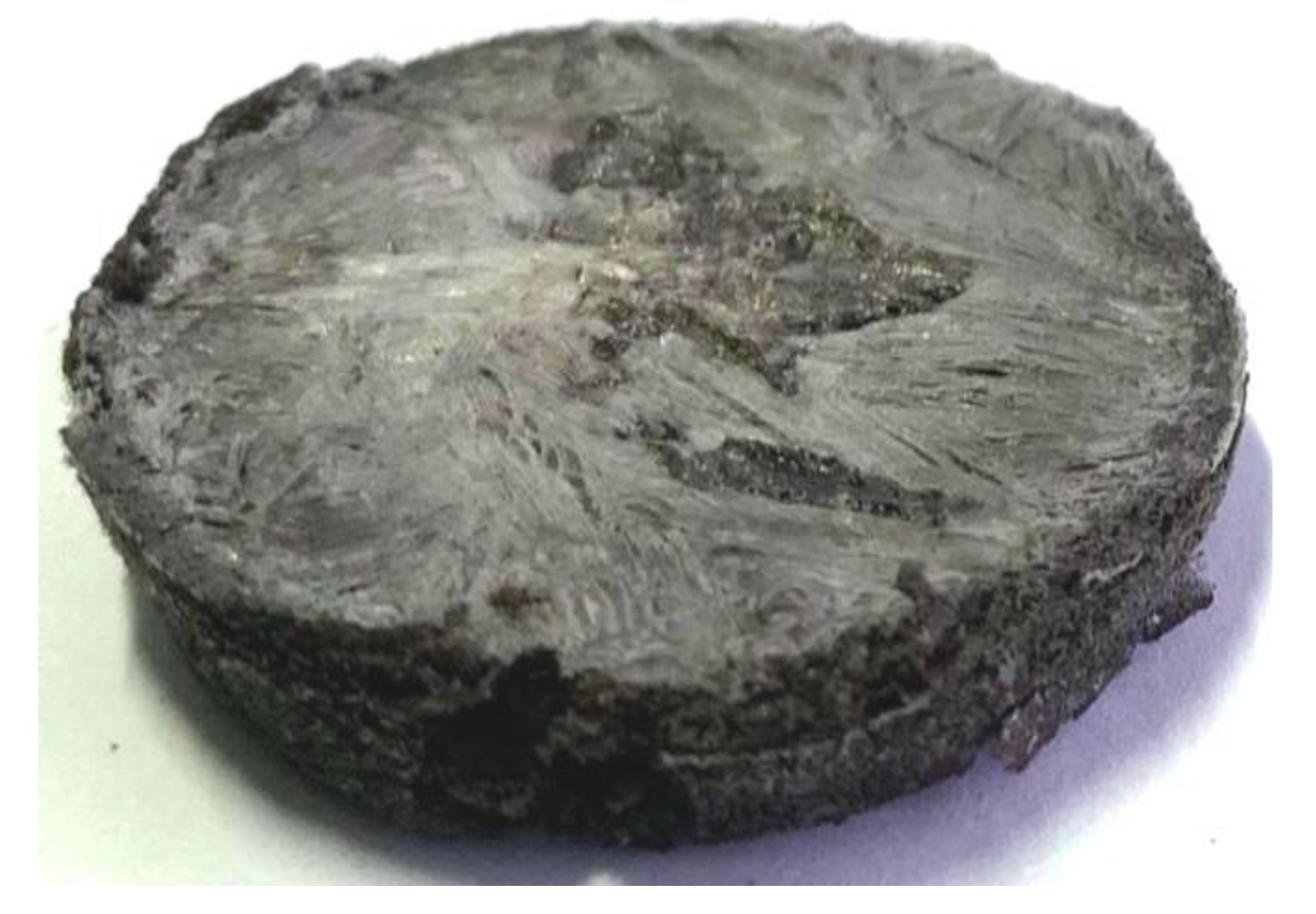
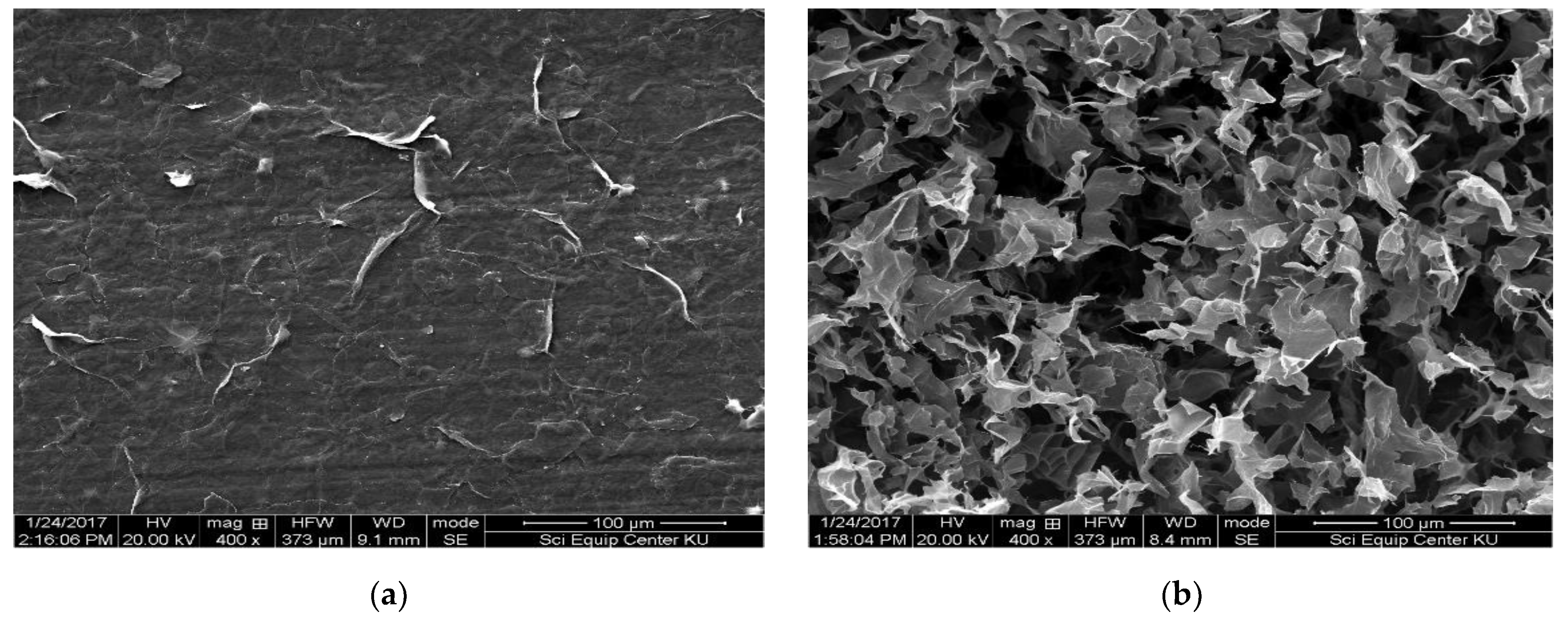

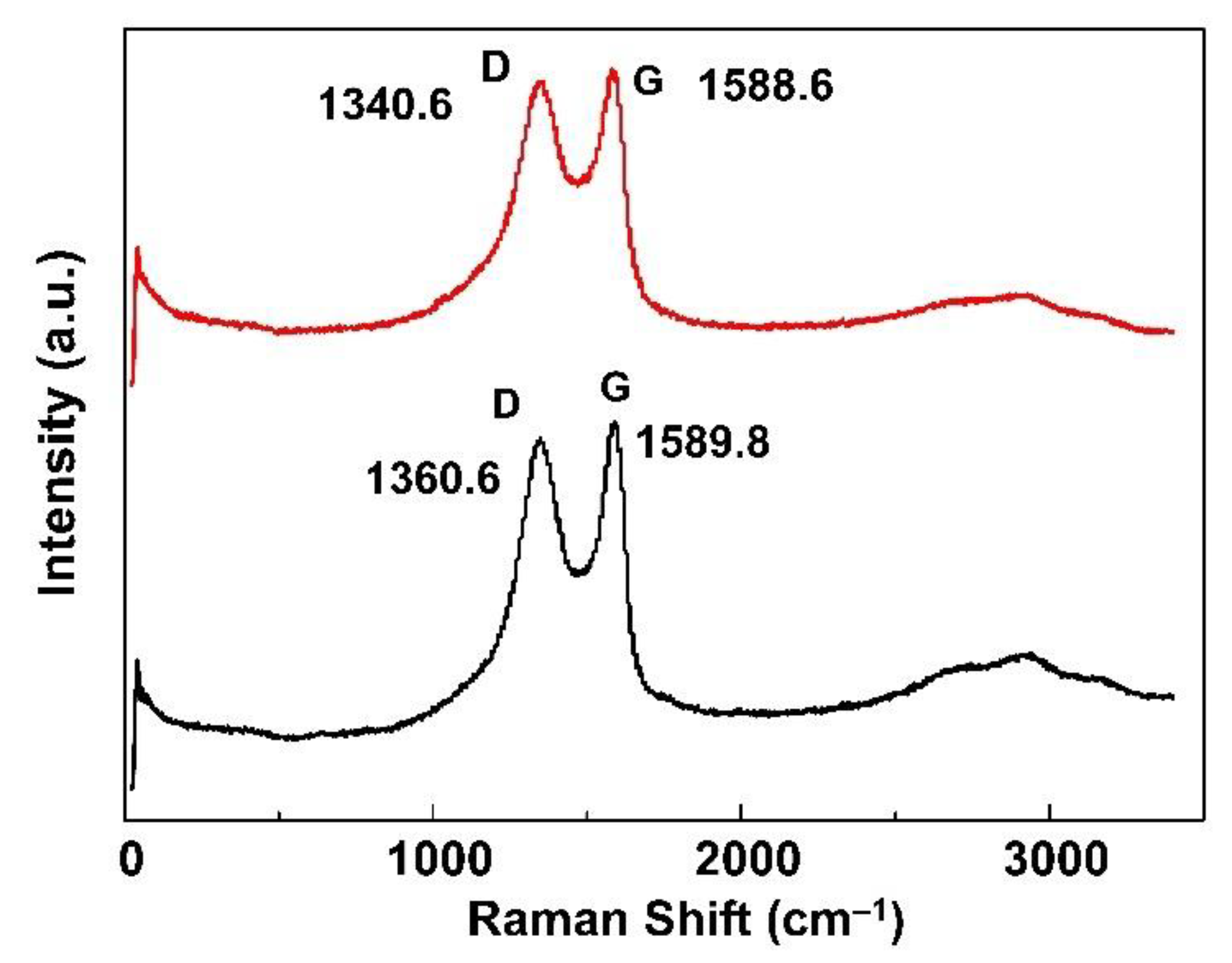

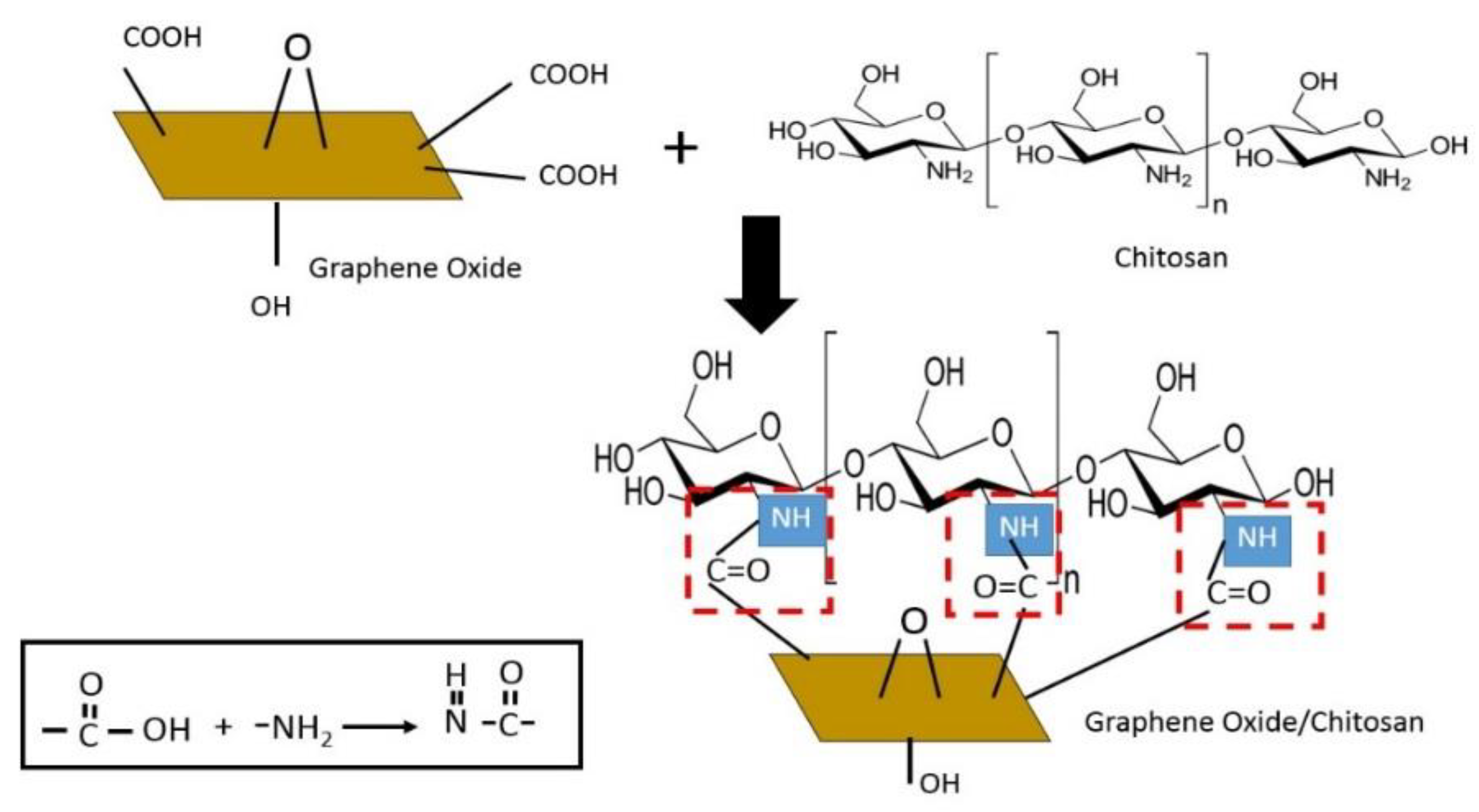

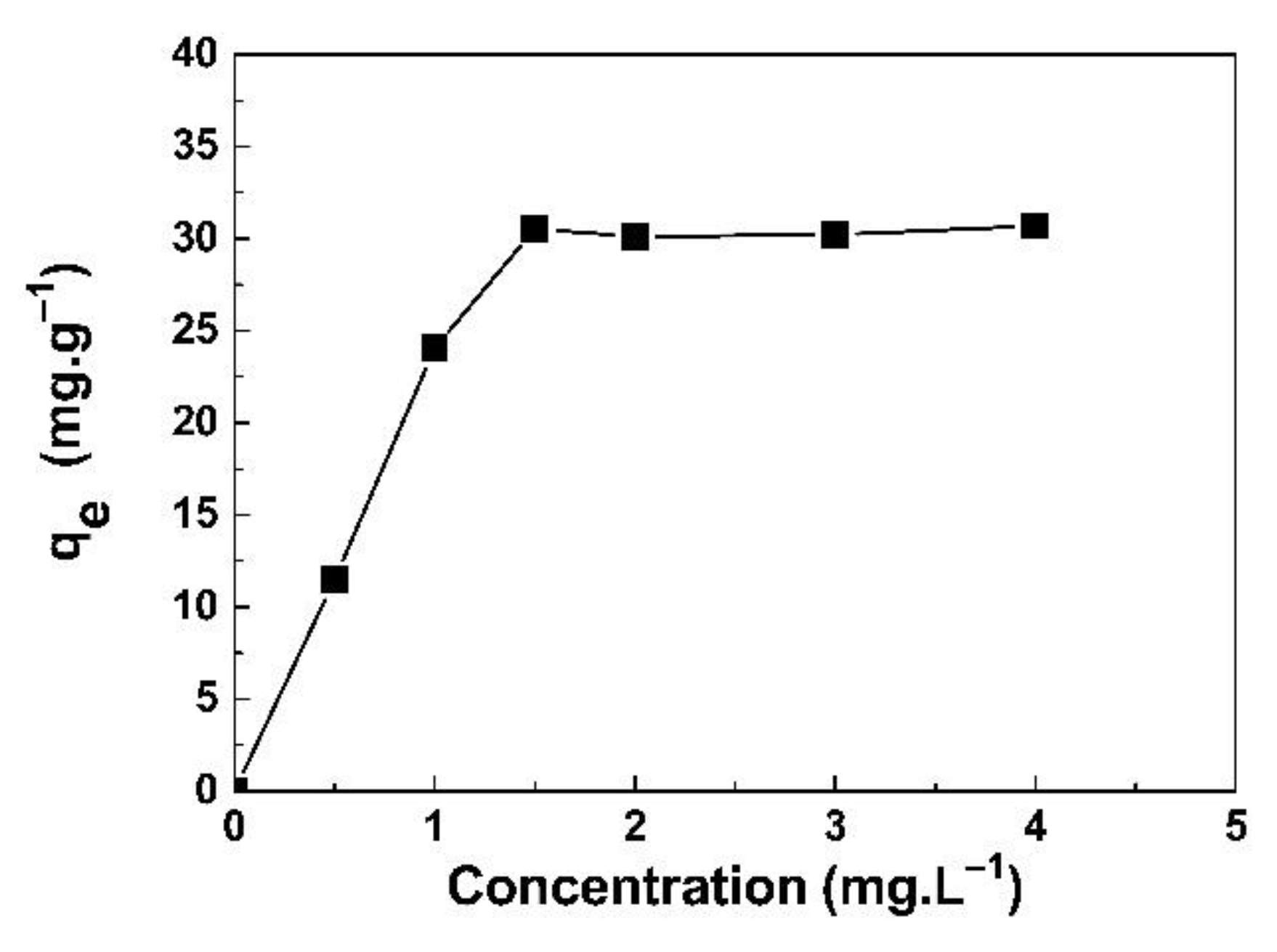
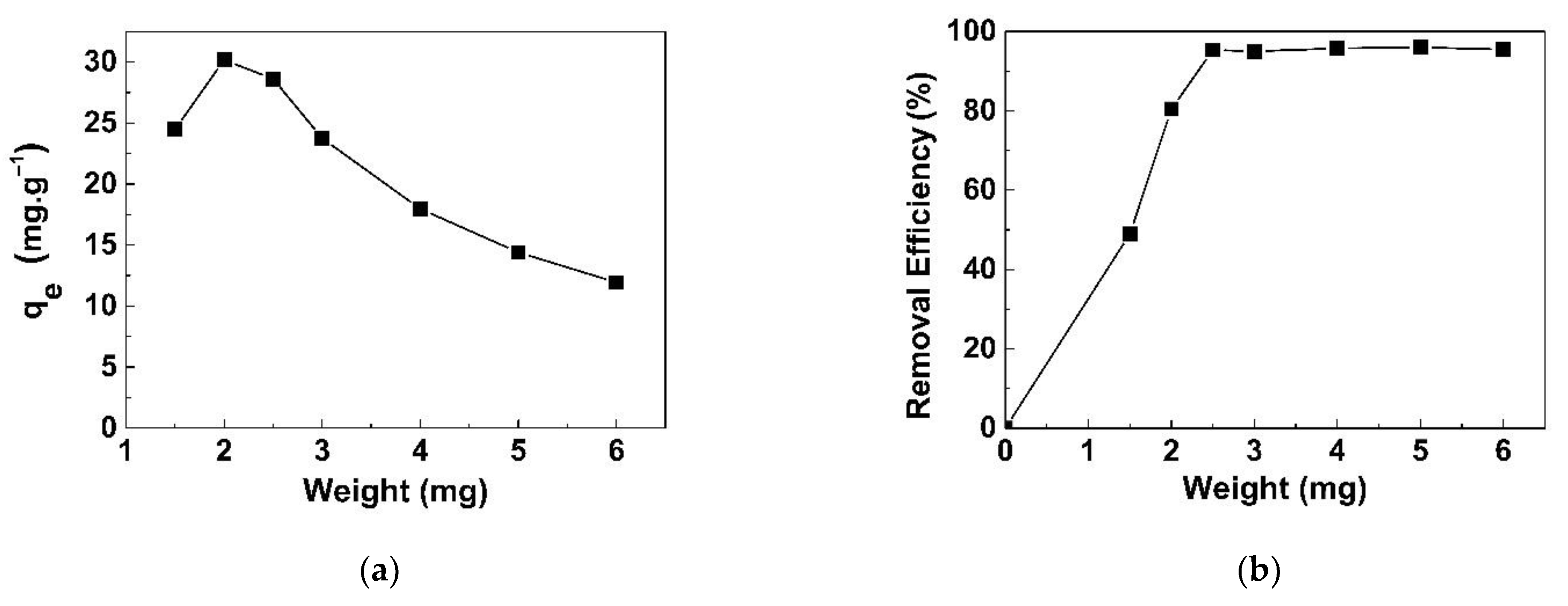
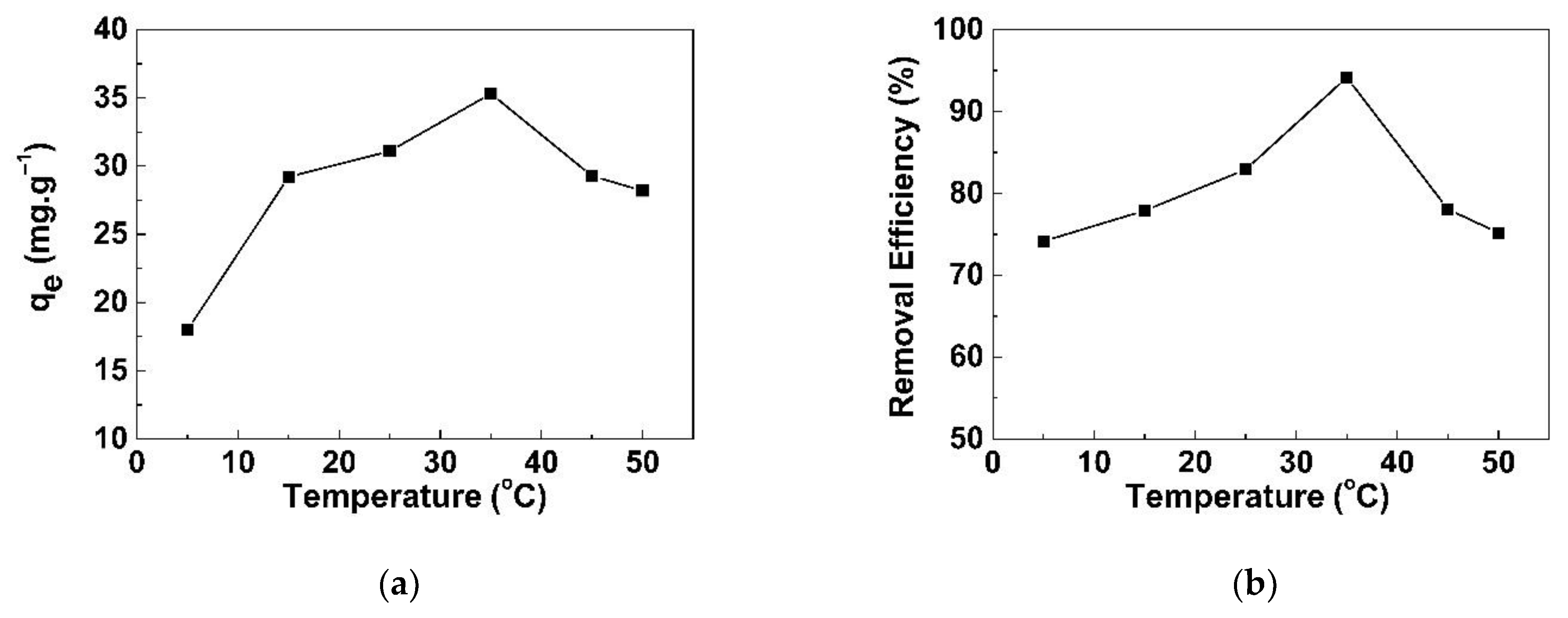
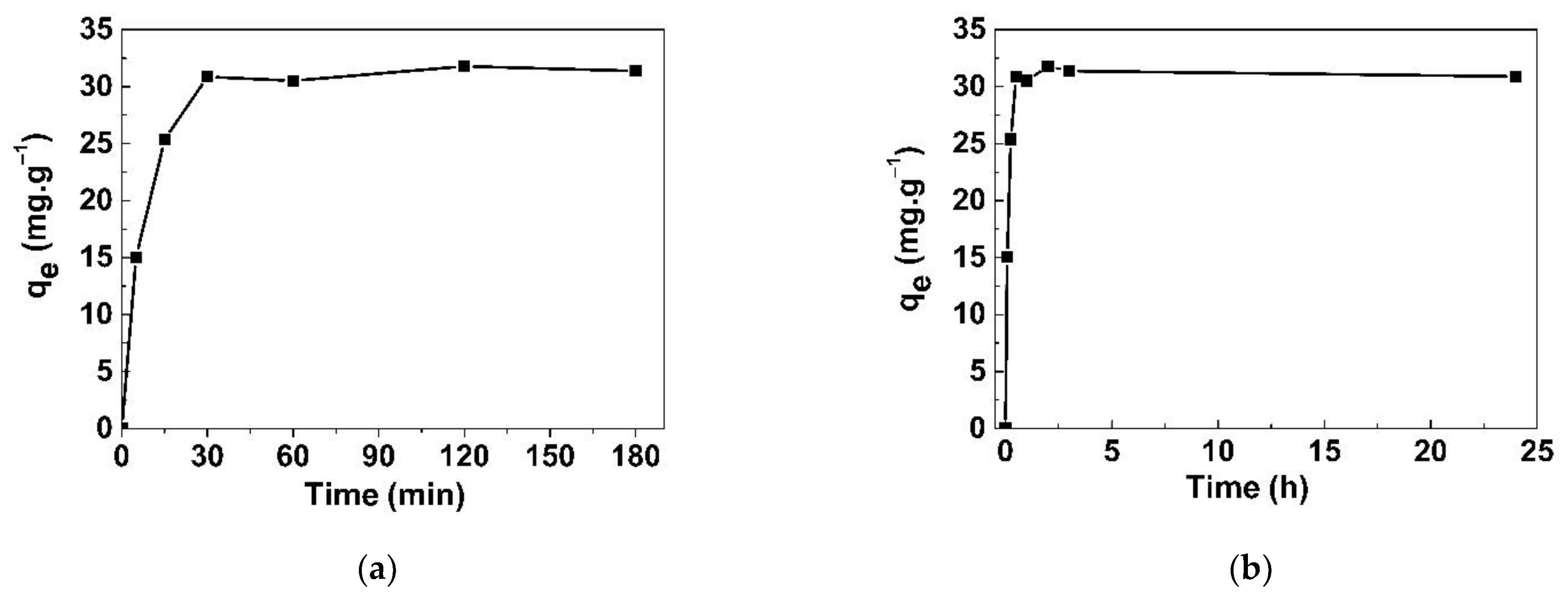
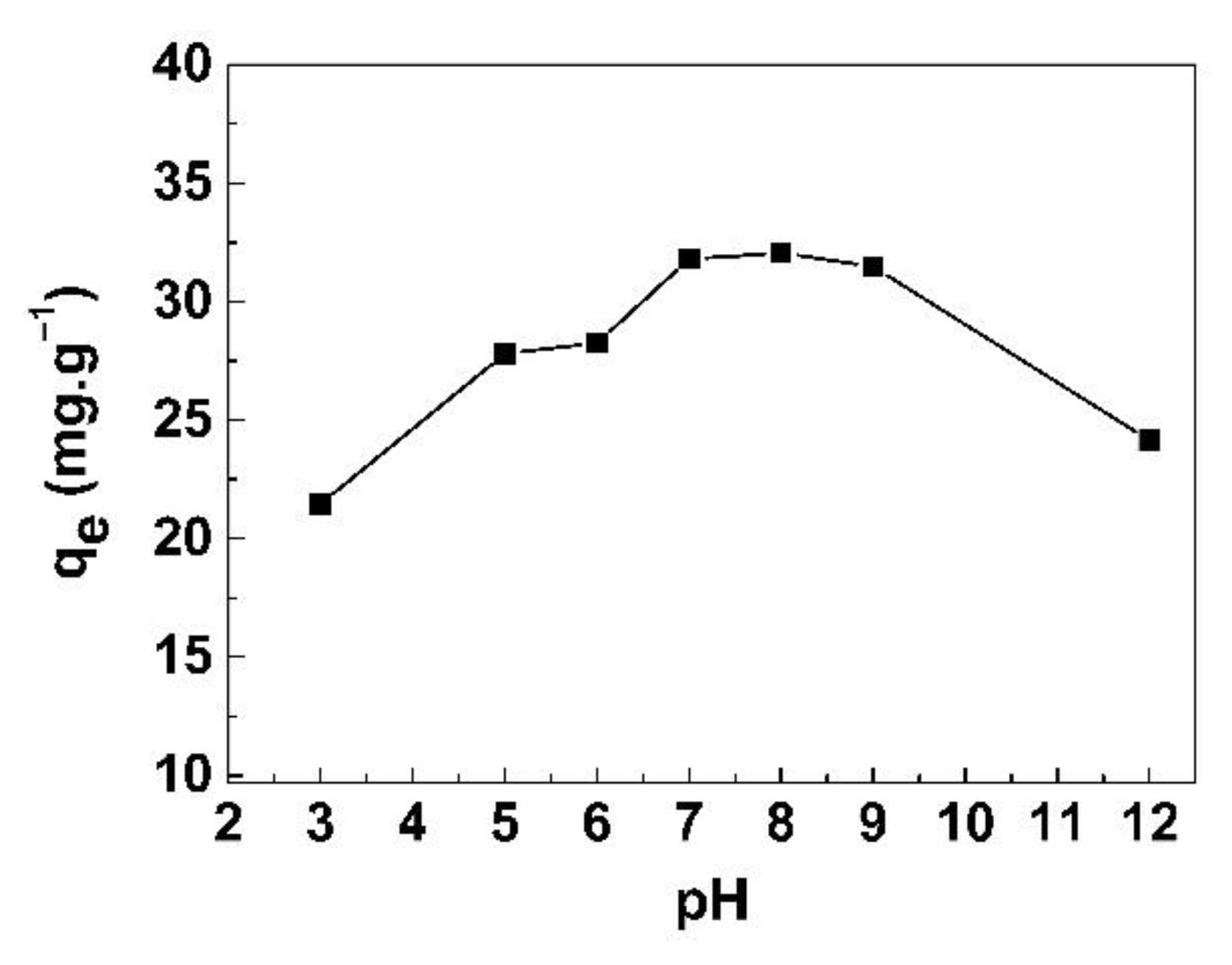
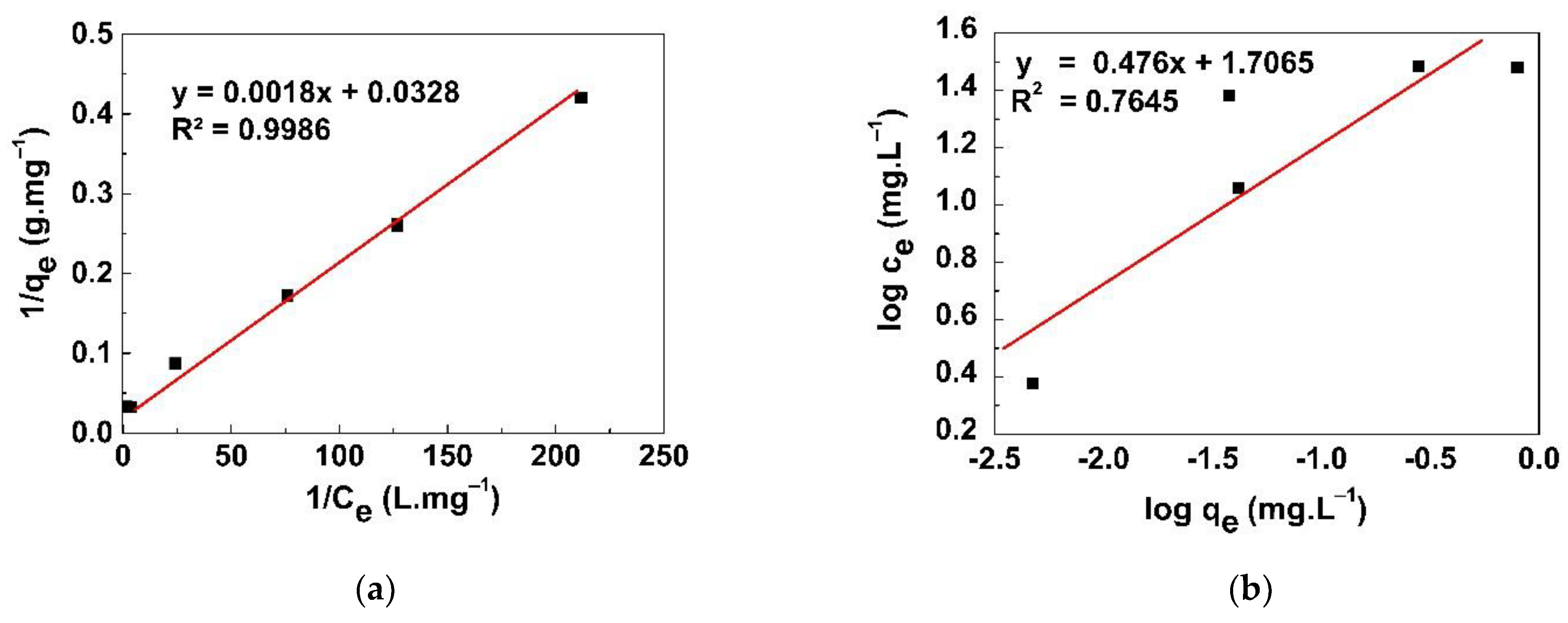

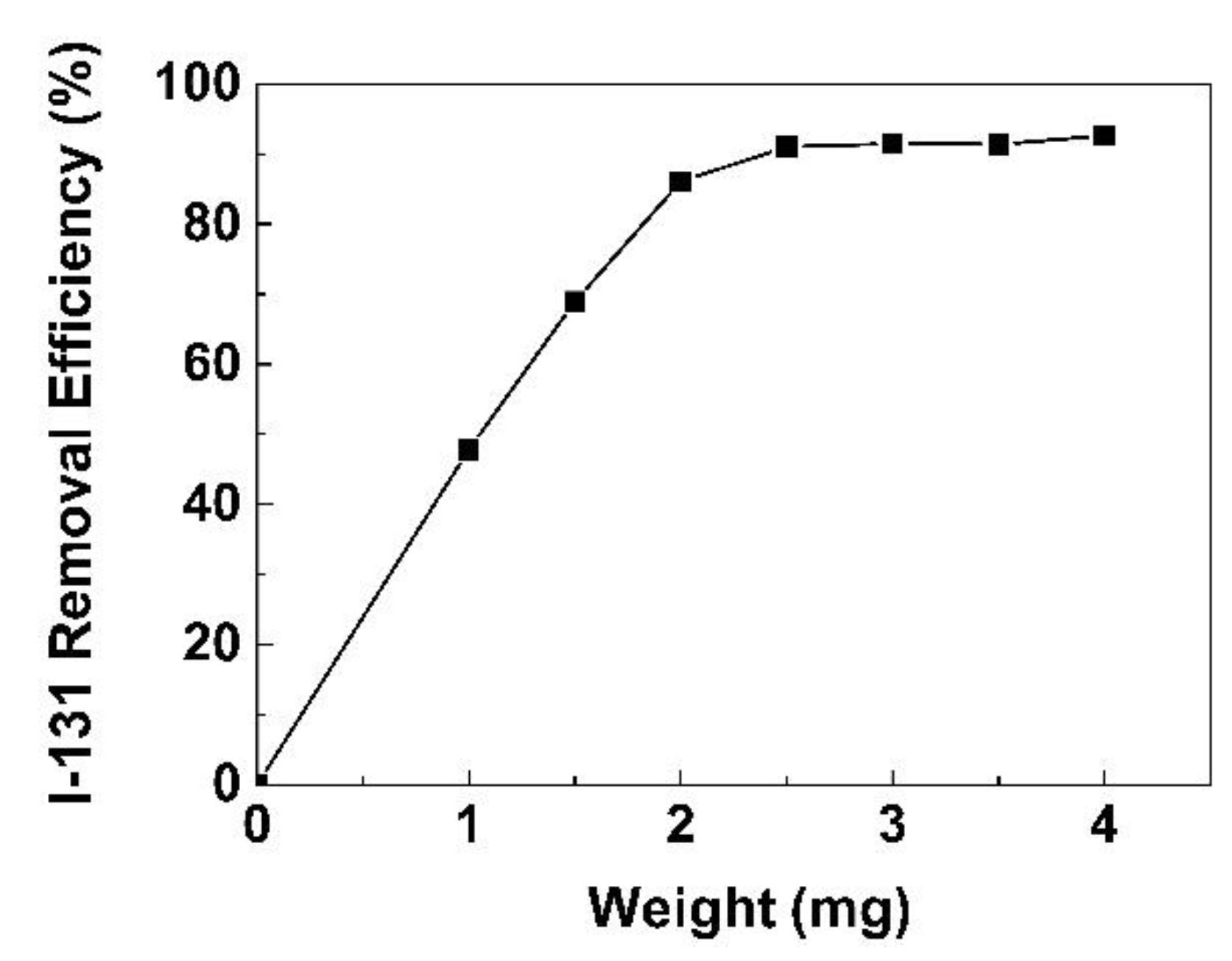
| Langmuir Isotherm Model | Freundlich Isotherm Model | |||||
|---|---|---|---|---|---|---|
| qmax (mg/g) | KL (L/mg) | R2 | RL | KF (mg/g) | 1/n | R2 |
| 30.4878 | 0.0182 | 0.9986 | 0.6295 | 50.8745 | 0.4760 | 0.7645 |
Publisher’s Note: MDPI stays neutral with regard to jurisdictional claims in published maps and institutional affiliations. |
© 2021 by the authors. Licensee MDPI, Basel, Switzerland. This article is an open access article distributed under the terms and conditions of the Creative Commons Attribution (CC BY) license (https://creativecommons.org/licenses/by/4.0/).
Share and Cite
Suksompong, T.; Thongmee, S.; Sudprasert, W. Efficacy of a Graphene Oxide/Chitosan Sponge for Removal of Radioactive Iodine-131 from Aqueous Solutions. Life 2021, 11, 721. https://doi.org/10.3390/life11070721
Suksompong T, Thongmee S, Sudprasert W. Efficacy of a Graphene Oxide/Chitosan Sponge for Removal of Radioactive Iodine-131 from Aqueous Solutions. Life. 2021; 11(7):721. https://doi.org/10.3390/life11070721
Chicago/Turabian StyleSuksompong, Tanate, Sirikanjana Thongmee, and Wanwisa Sudprasert. 2021. "Efficacy of a Graphene Oxide/Chitosan Sponge for Removal of Radioactive Iodine-131 from Aqueous Solutions" Life 11, no. 7: 721. https://doi.org/10.3390/life11070721
APA StyleSuksompong, T., Thongmee, S., & Sudprasert, W. (2021). Efficacy of a Graphene Oxide/Chitosan Sponge for Removal of Radioactive Iodine-131 from Aqueous Solutions. Life, 11(7), 721. https://doi.org/10.3390/life11070721








